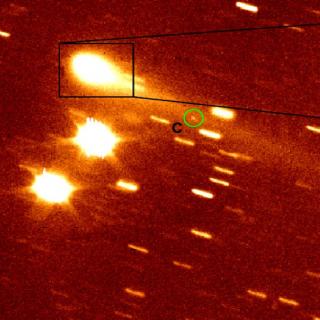Bibcode
Vaduvescu, O.; Curelaru, L.; Popescu, M.
Bibliographical reference
Astronomy and Computing
Advertised on:
1
2020
Citations
5
Refereed citations
4
Description
The world astronomical image archives offer huge opportunities to time-domain astronomy sciences and other hot topics such as space defense, and astronomical observatories should improve this wealth and make it more accessible in the big data era. In 2010 we introduced the Mega-Archive database and the Mega-Precovery server for data mining images serendipitously containing Solar system bodies, with focus on near Earth asteroids (NEAs). This paper presents the improvements and introduces some new related data mining tools developed during the last years. Currently, Mega-Archive indexed 15 million images available from six major collections and other instrument archives and surveys. This meta-data index collection is daily updated by a crawler which performs automated query of five major collections. Since 2016, these data mining tools are installed on the new dedicated EURONEAR server, and the database migrated to SQL which supports robust and fast queries. To constrain the area to search for moving or fixed objects in images taken by large mosaic cameras, we built the graphical tools FindCCD and FindCCD for Fixed Objects which overlay the targets across one of seven mosaic cameras, plotting the uncertainty ellipse for poorly observed NEAs. In 2017 we improved Mega-Precovery, which offers now two options for the ephemerides and three options for the input (objects defined by designation, orbit or observations). Additionally, we developed Mega-Archive for Fixed Objects (MASFO) and Mega-Archive Search for Double Stars (MASDS). We include a few use case scenarios and we compare our data mining tools with other few similar services. The huge potential of science imaging archives is still insufficiently exploited. Their use could be strongly enhanced by defining a standard format needed to index the image archives. We recommend to the IAU to define such a standard, asking the observatories to index their image archives in a homogeneous manner.
Related projects

Small Bodies of the Solar System
This project studies the physical and compositional properties of the so-called minor bodies of the Solar System, that includes asteroids, icy objects, and comets. Of special interest are the trans-neptunian objects (TNOs), including those considered the most distant objects detected so far (Extreme-TNOs or ETNOs); the comets and the comet-asteroid
Julia de
León Cruz